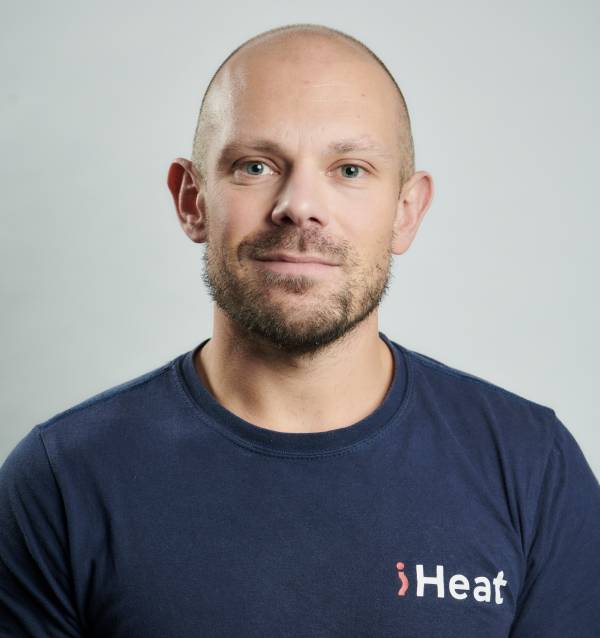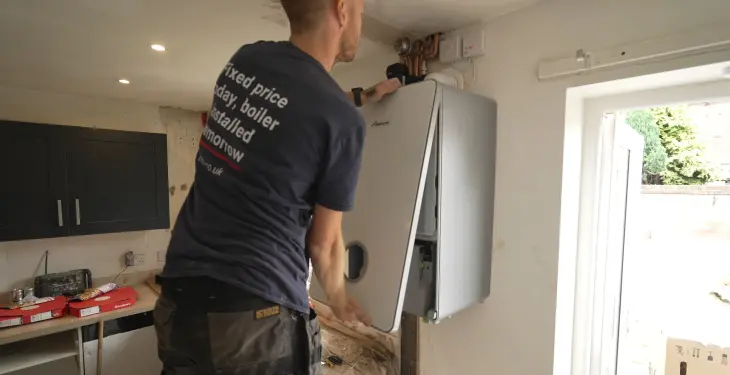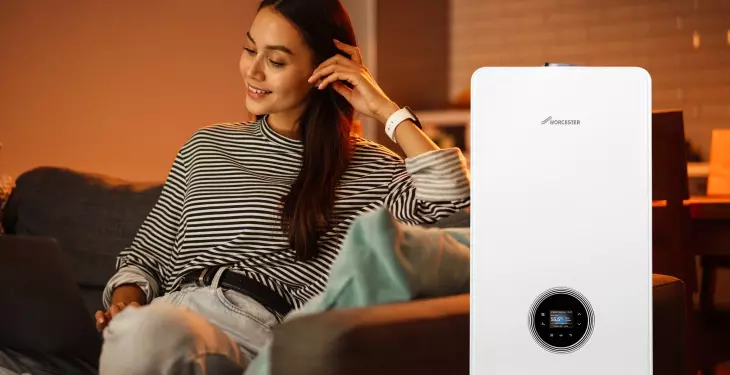

Written by Stephen Day
Gas Safe Engineer
Updated: 18th December, 2025
Homes that are not connected to the mains gas grid in the UK need alternative heating systems. Several options are available, with different benefits, costs, and environmental impacts.
Get a new boiler quote, save up to £550 per year (0% APR available).
Choosing the right boiler for an off-grid home in the UK is essential for comfort, efficiency, and cost savings. Many rural homes cannot access the main gas grid, so finding an effective and reliable heating solution is a top priority. The best boilers for off-grid homes in the UK are typically oil, LPG, biomass, and heat pump systems, each offering distinct advantages for different needs and budgets.
Oil boilers are a common choice, providing reliable heat and often high efficiency, with modern condensing models achieving over 90% efficiency. However, some homeowners are also considering sustainable alternatives like biomass boilers and heat pumps to reduce environmental impact and take advantage of long-term savings.
Get a quote in 60 seconds, fitted as fast as next day!
0% APR finance available.
Homes that are not connected to the mains gas grid in the UK need alternative heating systems. Several options are available, with different benefits, costs, and environmental impacts.
Popular off-grid heating methods include:
Oil boilers: Common and reliable, these use oil stored in a tank to provide central heating and hot water.
LPG boilers: Similar to conventional boilers but powered by liquefied petroleum gas, stored on-site.
Heat pumps: These extract heat from the air or ground and are highly efficient, especially in newer homes with good insulation.
Biomass boilers: Burn wood pellets, chips, or logs to heat the home and hot water. They are seen as more sustainable compared to fossil fuels.
Solid fuel systems: Use coal or wood, including log burners or multi-fuel stoves, for direct room heating.
Solar thermal systems: Use solar panels to heat water, usually working best alongside other systems.
The table below shows a basic comparison:
Method | Fuel Type | Can heat hot water? | Typical Installation Cost |
Oil Boiler | Oil | Yes | Medium |
LPG Boiler | LPG | Yes | Medium |
Heat Pump | Electricity | Yes | High |
Biomass Boiler | Wood Pellets | Yes | High |
Solid Fuel | Wood/Coal | Rarely | Low - Medium |
Solar Thermal | Sunlight | Yes (only water) | Medium - High |
Some methods, like oil and LPG, act much like conventional boilers. Others, such as heat pumps and biomass, use newer technology and may work best with modern heating systems.
Choosing the right system depends on the home’s insulation, budget, and whether there is enough space for fuel storage or equipment. For many off-grid homes, combining two methods gives the most reliable results.
Improving energy efficiency is essential for any off-grid home. It helps to reduce running costs and makes it easier to heat your home with limited resources.
Insulation is one of the most effective ways to keep heat inside. Adding insulation to your loft, walls, and floors can stop warmth escaping. Double or triple glazing on windows also helps reduce heat loss.
Simple steps for better insulation:
Use thick curtains or thermal blinds
Block drafts around doors and windows
Install weatherstripping or draft excluders
A well-sealed home holds heat better, so the boiler or heating system needs to work less.
Heating controls play a big part in efficiency. Programmable thermostats, radiator valves, and timers let you manage when and where to heat your home. This cuts down on wasted energy.
Switching to high-efficiency boilers and choosing renewable heating options, like heat pumps or biomass boilers, can also help off-grid homes. These systems use less fuel and create less waste heat.
Quick comparison table:
Method | Benefit | Challenge |
Loft Insulation | Reduces heat loss | Upfront cost |
Double Glazing | Keeps warm air in | Installation time |
Heat Pumps | High energy efficiency | Needs electricity |
Radiator Valves | Room-by-room control | May need upgrades |
Draft Proofing | Stops unwanted heat escape | Needs regular checks |
There are several heating systems available for homes that are not connected to the main gas grid. The right option can depend on budget, house size, and energy needs.
Heat pumps are gaining popularity. They work by extracting warmth from the air or ground, even in cold temperatures. Some models can work well with underfloor heating, making them efficient for larger spaces.
Biomass boilers burn wood pellets or logs. These are often chosen for their reliability and lower running costs over time. Biomass systems are usually larger and need space for fuel storage.
Oil-fired boilers remain a common choice. They are effective and can heat both water and radiators. Oil tanks do need safe installation and regular top-ups, which adds some ongoing tasks for homeowners.
LPG boilers are another alternative for those off-grid. Liquid petroleum gas (LPG) can be stored in tanks outside the home. These boilers often operate in a similar way to gas combi-boilers and suit properties with limited space.
For those wanting simple options, storage heaters use electricity at night to store warmth in ceramic bricks and release it during the day. This can be more costly but easy to use in smaller homes.
Solar thermal systems also help to heat water using energy from the sun. While not usually the only heating system, they can lower energy bills by reducing the demand on other boilers.
Heating Solution | Main Fuel/Source | Works With Underfloor Heating? | Storage Needed |
Heat Pump | Air or ground energy | Yes | No |
Biomass Boiler | Wood pellets/logs | Yes | Yes |
Oil Boiler | Oil | Yes | Yes |
LPG Boiler | LPG | Yes | Yes |
Storage Heater | Electricity | No | No |
Living off-grid offers unique challenges for heating, especially in the UK where winters can be cold and long. The most popular options for off-grid heating are oil boilers, LPG boilers, biomass boilers, heat pumps, and solar thermal systems.
Oil boilers remain a common choice in rural areas. They are efficient and reliable, with modern condensing models reaching efficiency ratings of over 90%. Oil is one of the cheaper liquid fuels available off the grid, but prices can vary and storage tanks are needed.
LPG boilers are similar to natural gas boilers but use bottled or tanked gas. They are easy to install and can be a good option where other fuels are not available. However, LPG tends to be more expensive than oil.
Biomass boilers burn wood pellets, chips, or logs. These systems are popular for those wanting a renewable option. Biomass can reduce carbon emissions, but storage space for fuel is essential.
Heat pumps offer renewable heating by extracting warmth from air or ground. They work best in well-insulated homes and can be paired with solar panels. Initial costs are higher, but running costs are low.
Heating System | Efficiency | Fuel Type | Key Points |
Oil Boiler | Up to 90%+ | Liquid Fuel | Cheaper fuel, needs a storage tank |
LPG Boiler | Up to 90% | Gas | Flexible, higher running costs |
Biomass Boiler | 80-90% | Wood/Fuel | Renewable, needs storage |
Heat Pump | 300%+* | Electricity | Renewable, low running costs |
*Efficiency above 100% due to the way heat pumps convert energy.
The Boiler Upgrade Scheme, overseen by Ofgem, can offer grants for some renewable systems like heat pumps and biomass boilers. This can help make switching more affordable for homeowners who qualify.
Oil and LPG are two common options for heating off-grid properties in the UK. Both use a fossil fuel boiler and need fuel delivered by tanker, but they have some key differences to think about.
LPG (liquefied petroleum gas):
Runs cleaner than oil, so it produces fewer emissions.
Tanks can be above or below ground and are often simpler to install.
Can be used for both heating and cooking.
Usually needs regular deliveries but can also be supplied in cylinders for smaller homes.
Oil:
Often chosen by rural homes for its availability and reliable performance.
Oil boilers are known for strong heat output and work well even in larger homes.
The price of oil can be more stable than LPG, but this depends on market trends.
Feature | LPG | Oil |
Emissions | Lower than oil | Higher |
Installation | Simple, flexible tanks | May need more space |
Running costs | Can be higher | Fluctuate with oil price |
Fuel storage | Above/below ground tanks | Large tanks needed |
Some oil boilers can be converted to use LPG with a conversion kit. This may be useful if owners want to switch fuels in the future without buying a new system.
Maintenance and servicing are needed for both types. Regular checks help prevent breakdowns and keep boilers safe and efficient.
Biomass boilers use organic materials—often wood pellets, chips, or logs—to produce heat. This renewable technology is well-suited for rural and off-grid homes that lack access to mains gas.
Homeowners choose biomass boilers because they provide a consistent source of eco-friendly heating. Unlike traditional fossil fuels, the materials used in these boilers are considered carbon neutral if sourced responsibly.
Key features include:
Reduced reliance on fossil fuels
Lower carbon emissions
Support for sustainable forestry
Potential for local fuel sourcing
Biomass boilers work by burning organic fuel to heat water, which is then distributed around the home for central heating and hot water. These systems can handle the demands of larger, older, or less insulated properties often found in the countryside.
Pros | Cons |
Lower carbon footprint | Need space for fuel |
Stable fuel costs | Regular maintenance |
Suitable for off-grid areas | Manual fuel delivery |
This technology is ideal for homeowners looking for renewable heating that aligns with green energy goals. Maintenance is needed, as ash removal and yearly servicing keep the system efficient.
With planning, a biomass boiler can supply dependable heat through the coldest months, making it a strong choice for sustainable living off the gas grid.
Before starting installation, it is important to check if the home is suitable for a heat pump. Good insulation, draught-proof windows, and enough outdoor space for the unit are needed.
An air source heat pump is the most common choice for off-grid homes. It draws heat from the outside air and works even in colder weather. The outdoor unit needs to be placed in an open area with good airflow.
Steps for Installation:
Assess property: Check insulation, window seals, and available space.
Choose system: Pick either an air source or ground source heat pump based on the property.
Prepare site: Clear debris and make sure the area is level for the unit.
Install unit: A professional fits the outdoor and indoor parts, connects pipework, and sets up controls.
Test system: The installer runs the system and checks for correct operation.
Key Requirements Table
Requirement | Details |
Insulation | Well-insulated walls, roof, and floors |
Space | Open outdoor space for unit |
Power Supply | Reliable electricity source |
Radiators/Flooring | May need updates for lower water temps |
Professional installation is strongly recommended. Heat pumps work best when the whole system is set up and balanced correctly.
Homeowners should also consider the cost of installation and potential upgrades to radiators or underfloor heating for better performance.
Solar heating is a popular choice for off-grid homes in the UK. Homeowners use solar panels or solar PV panels to collect free energy from the sun. This energy can be used for heating water or warming living spaces.
Pros:
Low running costs: After installation, solar systems need very little maintenance and sunlight is free.
Reduces bills: Solar thermal panels can cut energy bills by £130–£255 per year, depending on the existing system.
Eco-friendly: Solar heating produces no direct emissions.
Reliable backup: Works especially well with heat pumps or as a boost to other heating systems.
Cons:
High installation cost: Setting up solar heating, panels, and controls can be expensive upfront.
Weather dependent: Solar energy is less effective in the UK during winter or cloudy days.
Space needed: Roof or land space is needed for enough panels.
Not a full solution: Solar heating often needs to be combined with other systems like heat pumps or wood burners to meet all heating needs year-round.
Feature | Solar Panels / PV Panels | Solar Water Heating |
Uses | Electricity generation | Heating water |
Upfront Cost | High | High |
Maintenance | Low | Low |
Works with Heat Pumps | Yes | Yes |
Performance | Weather dependent | Weather dependent |
Solar heating gives flexibility. Many off-grid homes combine it with heat pumps or biomass boilers for steady heat. This mix makes the most of both sunny and cloudy days.
Choosing the right off-grid heating solution depends on several factors. These include location, fuel availability, upfront costs, running costs, and maintenance needs.
1. Consider Local Fuel Options
Some rural areas have limited fuel choices. Options may include wood, LPG, oil, or biomass. It is important to check what is easy to get and store nearby.
2. Energy Efficiency and Running Costs
Look for boilers or systems with high efficiency ratings. While some fuels seem cheaper at first, running costs can vary over time.
Fuel Type | Typical Efficiency | Running Cost (£/year) |
Oil | 85-94% | Moderate-High |
LPG | 85-96% | High |
Biomass | 85-95% | Low-Moderate |
Electric | 100% | Very High |
3. Heating and Domestic Hot Water Needs
Some systems heat only the home, but not the water. For example, a heat pump can provide both space heating and domestic hot water. Biomass and oil boilers often serve both needs, but require a hot water cylinder.
4. Environmental Impact
Consider emissions and sustainability. Biomass uses renewable fuel but needs storage space. Oil and LPG have higher carbon emissions.
5. Upfront Cost and Maintenance
Biomass and heat pumps may cost more to install than oil or LPG boilers. However, they often benefit from lower running costs or grants. Systems like oil boilers need annual servicing; wood systems need regular cleaning.
Researching all these points helps match the best system to any specific off-grid home.
The initial cost of installing an off-grid heating system can be high. Efficient boilers, such as biomass or LPG models, often require a larger upfront investment than basic oil or older systems.
Below is a simple comparison table of common off-grid boiler options:
Boiler Type | Typical Installation Cost | Fuel Cost | Maintenance |
Biomass | £8,000 - £15,000 | Low (wood/pellets) | Medium |
LPG | £2,000 - £4,000 | Medium | Low |
Oil | £3,000 - £5,000 | Medium-High | Medium |
Energy bills depend on the fuel type and the efficiency of the chosen boiler.
Modern, efficient boilers burn less fuel for the same amount of heat, leading to lower ongoing heating bills. Older, less efficient systems may cost more in the long term despite being cheaper to install.
Check out our latest in depth best combi boilers 2026 guide if you think your home would benefit.
Some off-grid heating systems, like heat pumps and biomass boilers, may be eligible for government incentives or grants, which can reduce the initial cost. Homeowners should check for current UK government boiler schemes and support.
Regular maintenance is needed to keep boilers running efficiently. This helps control running costs and avoid expensive repairs.
Choosing the right system requires careful planning to balance upfront cost, possible savings on energy bills, and access to government support.
Last updated: 18th December, 2025

Written by Stephen Day
Gas Safe Engineer at iHeat
Stephen Day is a Gas Safe registered and FGAS certified engineer with over 20 years of hands-on experience in the heating, cooling, and renewable energy industry, specialising in boiler installations, air conditioning, and heat pump systems.
LinkedInArticles by Stephen Day are reviewed by iHeat’s technical team to ensure accuracy and reliability.

22nd December, 2025
Based on data from over 7000 boiler installations completed by iHeat in the past 12 months...
 Read Article
Read Article

22nd December, 2025
Here’s a quick roundup of the best combi boilers for 2026.
 Read Article
Read Article

22nd December, 2025
When your old boiler breaks down and it comes time to replace it with a new one, it might...
 Read Article
Read Article
No obligation. Takes less than 60 seconds.